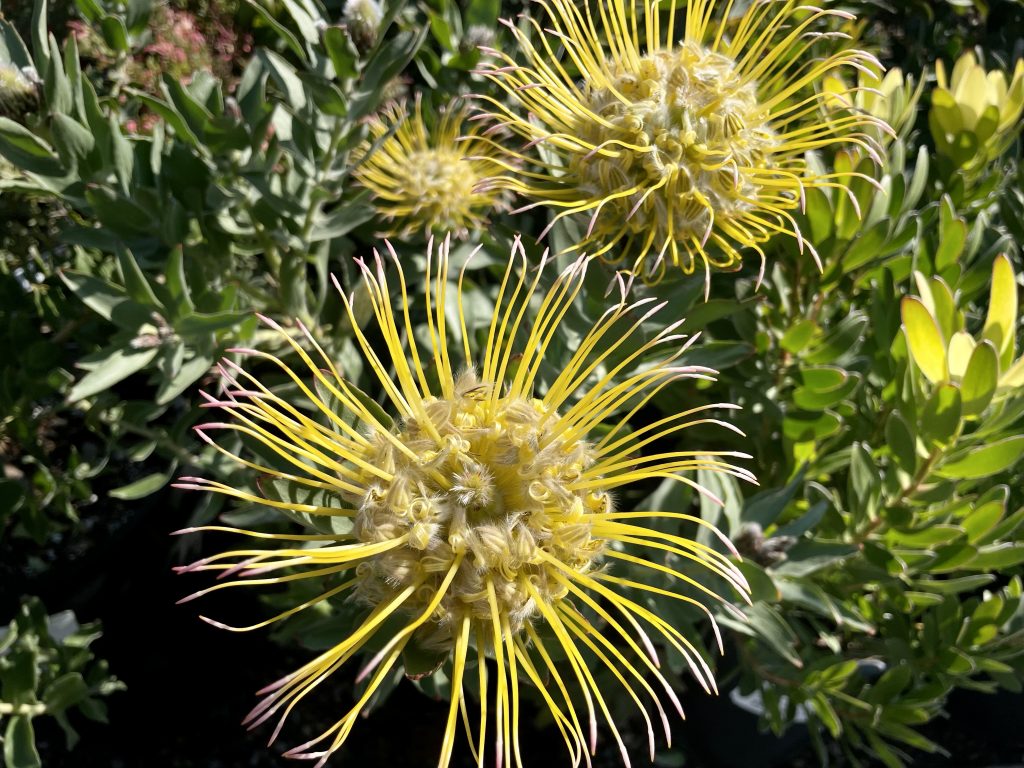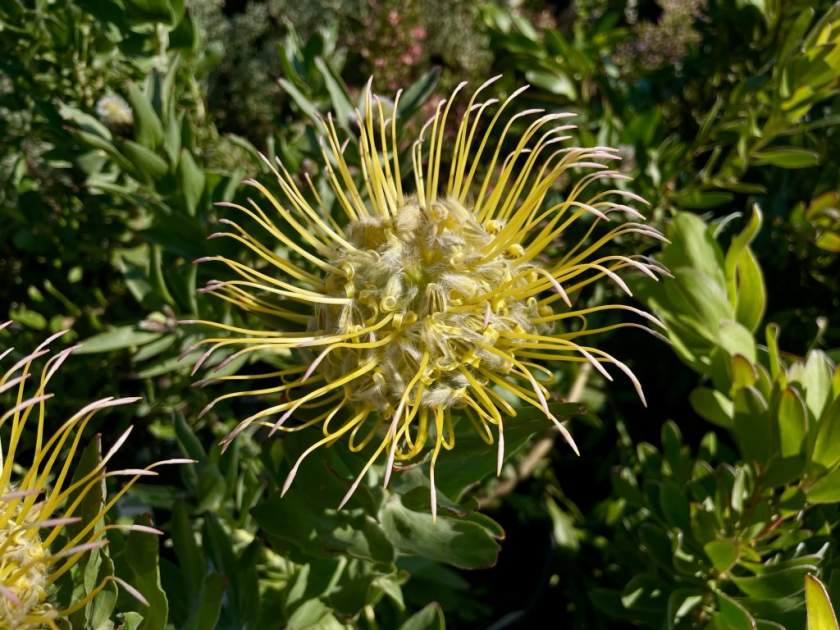Leucospermum gueinzii 5G is part of the Proteaceae family of plants. It is an upright growing shrub. It is native to South Africa. In its natural habitat, it grows endemic to the Hottentots-Holland Mountains and you can find them from Jonkershoek to Verkykerskop and Groenland Mountains. They also call it Kloof, Kloof Fountain-pincushion, or Pinwheel Pincushion. The plant grows in clay soil in kloofs, therefore it is popularly also called Kloof. In South Africa, a kloof is a steep-sided, wooded ravine. Leucospermum gueinzii 5G flowers between August and December.

The Leucospermum gueinzii 5G flowers are golden-yellow. They are egg-shaped with pointed parts that resemble a pinwheel. The Leucospermum gueinzii 5G flower heads grow in the axils of the leaves. It has leathery, pointy elliptic, and lance-shaped leaves. The shrub grows to 2–3 m or 6–9 ft high. The new branches start hairy and when they mature they become hairless.
How to grow Leucospermum gueinzii 5G
Grow it in the sun. Plant it in sandy, well-drained soil. Leucospermum gueinzii 5G is somewhat drought-tolerant, however, it is best to water it regularly during hot weather. Keep the leaves dry and water at the base. Remove fading flowers. Propagate by seed or semi-hardwood cuttings. Leucospermum gueinzii 5G attracts bird, bees and butterflies. Birds pollinate the flowers of Leucospermum gueinzii.
The seed is nut-like and is covered with an elaiosome. The elaiosome is rich in lipids and proteins that attract ants. In nature, many ants take the seed to their nest to consume the elaiosome but they leave the seed itself undamaged. In fact, by doing this they protect the seed from damage and other animals who eat it completely. Propagate Leucospermum gueinzii 5G both by seed and cuttings. Expose the seeds to the cold for a couple of weeks before sowing. Then soak them in 1% Hydrogen Peroxide for 24 hours to soften the elaiosome layer then rub it off before sowing. The hard layer prevents oxygen to reach the center of the seed which is required for growth.




